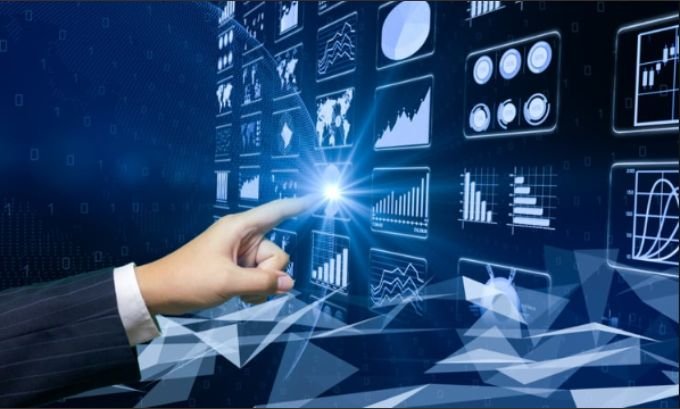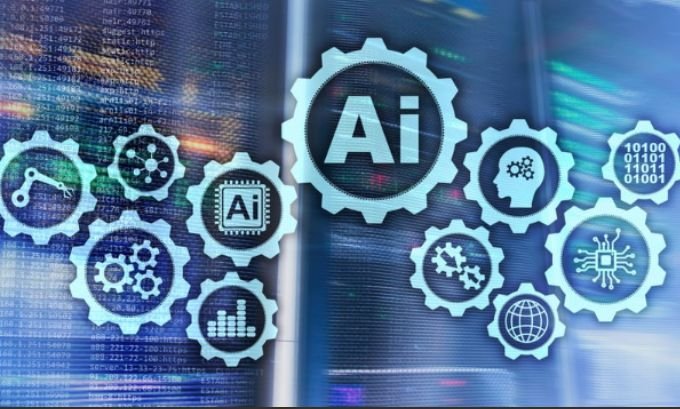The world of AI is moving at lightning speed, and keeping up can feel like a full-time job. With thousands of new applications launching, how do you know which ones are truly worth your time? After personally testing hundreds of options over the last year, I’ve found a select few that have fundamentally changed how I work, create, and automate my life.
This guide cuts through the noise. We will explore the absolute best AI tools for 2025, focusing on platforms that deliver real results. From creating ultra-realistic videos to automating complex business tasks, these tools are set to define the next wave of productivity and creativity.
Table of Contents
The Ultimate List of the Best AI Tools 2025
To thrive in 2025, you need a smart toolkit. The best AI tools are no longer just novelties; they are essential for content creators, marketers, developers, and anyone looking to gain a competitive edge. This list is based on hands-on experience, focusing on tools that save time, enhance creativity, and open up new possibilities.
The Rise of AI Agents: Google Mariner
Imagine you could tell your browser to find the cheapest flight to New York, gather contact information for ten potential clients, and schedule meetings, all while you focus on other tasks. That’s the promise of AI agents, and Google Mariner is leading the charge.
Personal Experience with Google Mariner
As a marketer, my days are filled with repetitive tasks like research, data entry, and outreach. When I first got access to Google Mariner through a beta program, I was skeptical. I started with a simple command directly in my Chrome browser: “Find the email addresses for the marketing heads at these 5 startups and draft a personalized outreach email for each.”
Instead of spending an hour on this, Mariner completed the task in under three minutes. It opened new tabs, navigated websites, identified the right contacts, and prepared drafts in my Gmail. This is an agentic workflow in action—a system that understands a high-level goal and executes the necessary steps without manual intervention. It felt like delegating work to a hyper-efficient assistant who lives inside my browser.
What I Like
- Seamless Integration: It operates directly within Chrome, making it incredibly intuitive and accessible. There’s no need to switch between different apps.
- Time Savings: It automates multi-step processes that would normally take hours, freeing up significant mental bandwidth.
- Empowers Non-Coders: You don’t need any technical skills to use it. If you can describe what you want, Mariner can execute it.

Areas for Improvement
- Learning Curve for Complex Tasks: While simple commands are easy, crafting prompts for highly complex, multi-layered tasks requires some practice and precision.
- Limited Availability: As of now, it’s being rolled out gradually, so not everyone has access.
AI Video & Audio Generation: Synthesia, OpenAI Sora, and ElevenLabs
Video and audio content dominate the digital landscape, but production has always been a barrier. These AI tools are changing that.
Synthesia: Professional AI Avatar Videos in Minutes
Synthesia allows you to create studio-quality videos with realistic AI avatars. You simply type a script, choose an avatar, and the platform generates a video of that person speaking your words.
I use Synthesia to produce training videos and client onboarding modules. Instead of booking a studio and coordinating with a film crew, I can generate a polished video in over 140 languages in less than 30 minutes. Recently, for a global product launch, we created localized marketing videos for ten different regions in a single afternoon. The ability to customize avatars and maintain brand consistency across all content is a massive advantage.
OpenAI Sora: The Future of Cinematic AI Video
OpenAI Sora is a revolutionary tool that generates video from text prompts. But its true power lies in its new storyboarding feature, which allows you to describe a sequence of scenes and have Sora stitch them together into a coherent narrative.
As a content creator, I’ve used Sora to generate stunning B-roll footage that would have been impossible or too expensive to shoot. For a video about urban innovation, I prompted: “A tracking shot of a futuristic city at sunrise, with solar-powered vehicles moving silently on elevated roads.” The result was a breathtaking, cinematic clip that elevated the entire production. While it sometimes struggles with complex human motion, its ability to create hyper-realistic environments is unparalleled.
ElevenLabs: Unsettlingly Realistic AI Voices
ElevenLabs is the gold standard for AI voice generation. You can clone your own voice or use its vast library of synthetic voices to turn any text into natural-sounding speech.
I combined ElevenLabs with Synthesia to create my own AI avatar. I trained an ElevenLabs model on a few hours of my recorded audio, which gave me a digital clone of my voice. Now, I can generate video content where my AI avatar speaks with my own voice, all from a simple text script. This is incredibly powerful for scaling content production without being in front of a camera. The voice cloning is so accurate that most people can’t tell the difference.
Research and Knowledge: NotebookLM and Perplexity
Information overload is real. These AI tools help you find, understand, and synthesize knowledge faster than ever before.
NotebookLM: Your Personal Research Assistant
NotebookLM, a tool from Google, is designed to help you make sense of your documents. You can upload PDFs, Google Docs, text files, and even YouTube links, and then ask questions about the content.
I use NotebookLM to prepare for meetings and summarize long research papers. Before a client call, I upload our previous meeting notes, project proposals, and relevant emails. Then I ask, “What were the main concerns raised by the client in our last discussion?” NotebookLM provides a concise summary with direct citations from the source documents. Its audio summary feature, which creates a podcast-style conversation about your documents, is perfect for absorbing information during a commute.
Perplexity: The Answer Engine You Can Trust
Perplexity is an AI search engine that provides direct answers to questions, complete with citations. Unlike traditional search engines that give you a list of links, Perplexity synthesizes information from multiple sources to give you a clear, trustworthy answer.
I’ve almost completely replaced Google with Perplexity for my research needs. When writing this article, I asked, “What is the current market size and projected growth for the AI tools industry by 2025?” Instead of sifting through dozens of articles, I got a direct answer with links to the reports and studies where the data originated. This focus on verifiability makes it an indispensable tool for anyone who needs accurate information quickly.
Creativity and Coding: Suno AI and Claude
Whether you’re creating a marketing jingle or building an app, AI can now be your creative partner.
Suno AI: Create Royalty-Free Music on Demand
Copyright strikes are a nightmare for content creators. Suno AI solves this by letting you generate original, royalty-free music from a simple text prompt.
For a recent social media ad campaign, we needed an upbeat, funky background track. I gave Suno AI the prompt: “A cheerful, retro-funk track with a strong bassline and brass stabs, perfect for a summer product launch.” In seconds, I had several high-quality options to choose from. It has saved my team hundreds of dollars in music licensing fees and countless hours searching through stock music libraries.
Claude: The Coder’s Best Friend
Developed by Anthropic, Claude has earned a reputation as a top-tier AI assistant, especially for coding. Its 3.5 Sonnet model excels at generating clean code snippets, explaining complex programming concepts, and even building entire applications from natural language descriptions.
Though I’m not a professional developer, I used Claude to build a small internal tool for my team to track project progress. I described what I wanted: “A simple web app with a Kanban board interface where users can add, drag, and drop tasks between ‘To-Do,’ ‘In Progress,’ and ‘Done’ columns.” Claude generated the HTML, CSS, and JavaScript, explaining each part of the code along the way. Its collaborative feel makes coding more accessible and less intimidating.
Marketing and Sales: AdCreative
Scaling marketing efforts without sacrificing quality is a major challenge. AI tools like AdCreative are designed to solve exactly that.
AdCreative: AI-Powered Ad Creatives at Scale
AdCreative is an AI platform that generates high-converting ad creatives for social media and display networks. You provide your branding, messaging, and target audience, and its AI generates hundreds of ad variations for you to test.
Our marketing agency uses AdCreative to streamline A/B testing for clients. For a recent e-commerce campaign on Facebook, we were able to test 50 different ad creatives (variations in image, headline, and call-to-action) in a fraction of the time it would have taken manually. The AI analyzes competitor ads and performance data to generate designs that are statistically more likely to perform well. This has led to a measurable increase in click-through rates and a lower cost per acquisition for our clients.

AI Tools Comparison for 2025
| Tool Name | Category | Best For | Key Feature |
|---|---|---|---|
| Google Mariner | AI Agent | Automating multi-step tasks in Chrome. | Agentic workflows. |
| Synthesia | AI Video Generation | Professional training and marketing videos. | Realistic AI avatars. |
| OpenAI Sora | AI Video Generation | Creating cinematic scenes and B-roll. | Text-to-video storyboarding. |
| ElevenLabs | AI Voice Generation | Voice cloning and high-quality text-to-speech. | Realistic and emotive voices. |
| NotebookLM | AI Research | Summarizing and querying your own documents. | Audio summaries and source citations. |
| Perplexity | AI Search Engine | Getting direct, trustworthy answers with sources. | Verifiable, cited information. |
| Suno AI | AI Music Generation | Creating royalty-free background music. | Custom music from text prompts. |
| Claude | AI Assistant / Coding | Writing and debugging code. | Generating clean, documented code. |
| AdCreative | AI Marketing | Generating ad creatives at scale. | Data-driven ad design. |
FAQ: Your Questions About AI Tools in 2025 Answered
1. Which AI tool is best for beginners?
For general-purpose tasks and ease of use, an AI assistant like Claude is a great starting point. For content creation, Synthesia is incredibly user-friendly for making professional videos without technical skills.
2. Are these AI tools free to use?
Most of the tools listed, including NotebookLM, Perplexity, and Suno AI, offer generous free plans. Others like Synthesia and ElevenLabs provide free trials or limited free credits, with paid plans unlocking advanced features and higher usage limits.
3. Can AI tools really replace jobs?
Rather than replacing jobs, these tools are augmenting human capabilities. They automate repetitive tasks, allowing professionals to focus on strategy, creativity, and complex problem-solving. For example, OpenAI Sora empowers video editors to create better content faster, rather than replacing them.
4. How can I ensure the information from AI search engines is accurate?
Use an AI search engine like Perplexity that provides clear citations for its answers. Always cross-reference the original sources to verify critical information, especially for academic or professional work.
5. What is an “AI Agent” like Google Mariner?
An AI agent is an autonomous system that can understand a goal and perform a series of tasks to achieve it. Unlike a simple chatbot, an agent can interact with different applications and websites on your behalf to complete complex workflows.
6. Is it difficult to create an AI voice clone with ElevenLabs?
No, the process is surprisingly simple. You need to upload a few minutes of clear audio of your voice, and the platform handles the rest. However, the quality of the clone improves significantly with more training data (ideally 1-2 hours).
7. Can I use music from Suno AI for commercial projects?
The free plan for Suno AI is typically for personal use only. To use the music in commercial projects like ads or monetized YouTube videos, you will need to subscribe to one of their paid plans, which includes a commercial license.
Conclusion
The best AI tools of 2025 are more than just clever algorithms; they are powerful partners that can amplify your skills and productivity. From automating your workflow with Google Mariner to creating entire video campaigns with Synthesia and OpenAI Sora, the possibilities are expanding every day.
The key is to move from passive observation to active experimentation. Pick one or two tools from this list that align with your goals and start integrating them into your work. By embracing these technologies now, you position yourself at the forefront of a revolution that is reshaping every industry.
About the Author
Ema Lukan is a content strategist and AI enthusiast with over a decade of experience in digital marketing. She specializes in helping businesses leverage emerging technologies to create scalable and effective content. After personally testing and implementing hundreds of AI tools, Ema focuses on providing practical, hands-on advice that cuts through the hype.
References
- Anthropic’s research on the Claude 3.5 Sonet model.
- Google AI’s announcements regarding NotebookLM and Mariner.
- OpenAI’s research papers and blog posts on Sora.
- Market analysis reports on the growth of the AI software industry.

